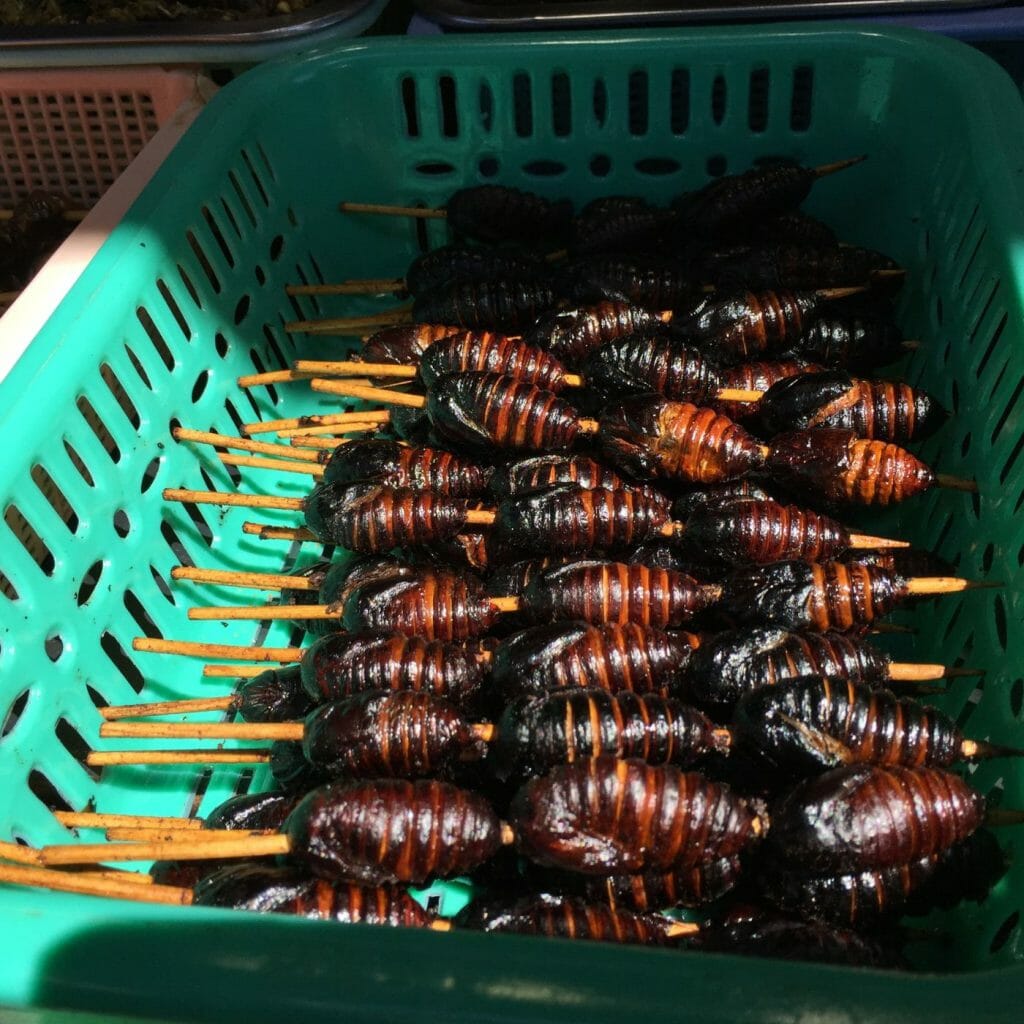Lovely Grub: Are Insects the Future of Food?

But I’d survived the quiche and the maggot fat at that first tasting by the Nordic Food Lab. Over my week in the Netherlands, I’d tried other delicacies: locust tabbouleh, chicken crumbed in buffalo worms; bee larvae ceviche; tempura-fried crickets; rose beetle larvae stew; soy grasshoppers; char-grilled sticky rice with wasp paste; buffalo worm, avocado, and tomato salad; a cucumber, basil, and locust drink; and a fermented, Asian-style dipping sauce made from grasshoppers and mealworms.
Although I found many of the dishes to be psychologically difficult to stomach, none of them actually tasted bad. The insects themselves were quite bland. The crickets had a slightly fishy aftertaste, and the buffalo worms a metallic one. The rose beetle larvae were vaguely reminiscent of smoked ham. Mostly, the insects were carriers for whatever other, stronger flavors were in a dish.

In fact, the Nordic Food Lab’s Josh Evans and Ben Reade declared their tasting a failure, largely because the star ingredients – which came from Dutch insect farms – were nearly flavorless. The insects were a far cry from the delectable specimens they’d caught in the wild during their research trips around the world.
Over the past year, they’ve been to five continents and discovered an astonishing world of insect flavor. In Australia, they savored the sweet-and-sour tang of honey ants and sampled scale insect larvae, which taste like fresh mushrooms and pop softly in the mouth. In Uganda, they feasted on queen termites, which are fatty – like little sausages – with the texture of sweetbreads, the fragrance of foie gras and a delicate sweetness. In Mexico, they enjoyed escamoles, desert ant eggs with a creamy mouthfeel, and blue cheese aroma.
Rather than carting crates of escamoles to Copenhagen, Evans and Reade hope to identify European insects that are similar to the ones they tasted on their travels or can be prepared in similar ways. (One pro tip they picked up from a farmer in southwestern Uganda: crickets should rest for a few minutes after being cooked.) They say the goal isn’t necessarily to get everyone to eat insects. Rather, it’s to introduce diners to delicious, under-used ingredients, expand food choices and encourage people to embrace the edible resources surrounding them.
Ministry Earth is a collective Awareness-Raising, Perception-Building Initiative from Humanity Healing International, Cathedral of the Soul Educational outreaches created to introduce the perspective of Ethical Consciousness and Nonhuman Personhood to its Animal & Eco Ministries. Ministry Earth is a Service-Oriented Initiative and its Magazine is a Copyrighted Publication of OMTimes Media, Inc. Broadcasting and Publishing House.






